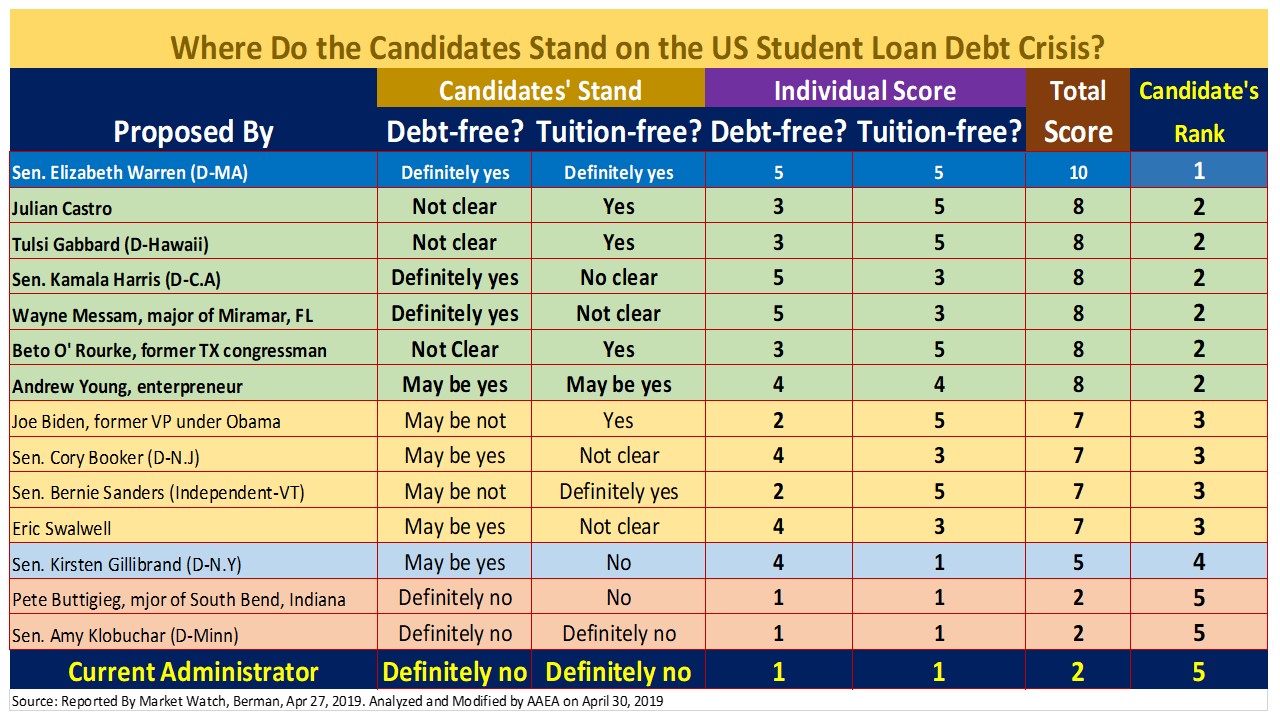With the prologue as discussed in Part I and Part II, we now can make a deeper analyses who may or will get favorable support from the 44 million voters. Clearly, the three candidates with a score of 5 will. Potentially, among these winners there will run as a running mate in the end. It is estimated that the US population in 2019 is around 329.6712 million. Remember that those who have or in the process of paying their student loans are estimated at around 20 million. The current students who are still taking classes, but have taken some sort of loans will need to be added into 44 million. Realistically speaking, not all 44 million will vote for the candidate with a score of 5. Here are the simulations and scenarios:

The analyses and numbers shown above are not exact, but estimated within a standard deviation and margin of errors. It is assumed that everyone that has some sort of student loan debt will support the candidate. Some may be not while others may have personal preference on certain candidates, regardless of their plan. However, the estimated percent may or may not fall within a standard deviation of the true statistical mean, but it may well fall within the ballpark. Some borrowers who have paid off their loans are excluded from the analyses. However, their sentiment may lean toward supporting the bailed-out effort, for they know how the loan has financially impacted their life.
Roughly, 20% votes will go to the candidate who support the bailed-out. Candidate that ranks #1 has a credible track record on this particular issue. She has voiced her stand many years ago, and supporters of college affordability, accountability and transparency. She is a strong advocate for improving the professionality and work quality of different college accreditation agencies. Do not be surprise if some who do not make the cut (with a score of 5), will shift or switch their position. However, this may show to the American public, the individual candidate motivation and interest in running for office. Is the motivation for the public’s interest or others?

